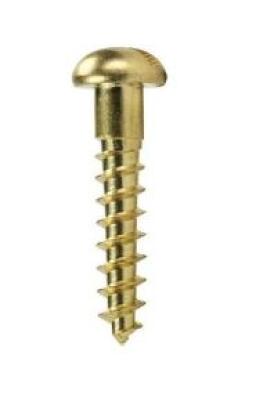Dusty Turtle:
I think the reason Richard suggested using loop end strings was not to save time, but to minimize the possibility that the wood might degrade and lose the grip on the screw. If you never have to unscrew the screw, the wood would be more likely to stay intact.
It seems to me that the screw pulled out because it was way too short. If you use a 3/4" long screw, even if the wood eventually does degrade, the screw will just sit in it like a pin. Because the first screw is so shallow, I would think a more appropriate length screw would make threads below the area that tore out. A drop of candle wax or some graphite shaved off a pencil lead can be dropped into the screw holes to relieve the friction when screwing and unscrewing, and preserve the grooves that the screw fits into.
Dusty Turtle:
you can also make a loop end string out of a ball end string by removing the ball. Just squeeze it with some plyers and pry it out.
I will have to try that. That is a total game changer for me, thanks for the tip Dusty. I try to buy anything I can from my local music store, since it's the only one in town that was able to stay open through the pandemic. I didn't know it was that easy to take the ball out of the loop on strings, and I think that will come in handy a lot with all the guitar strings I have.

